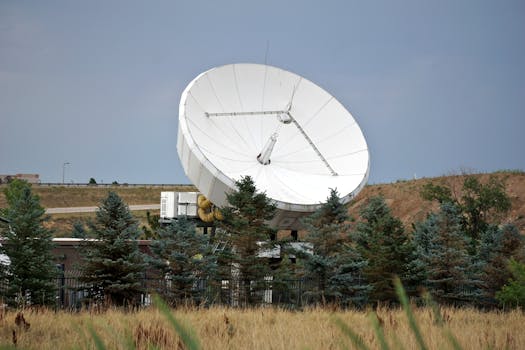The Future of Connectivity: Latest Breakthroughs in Satellite Telecommunications

The Future of Connectivity: Latest Breakthroughs in Satellite Telecommunications
The Future of Connectivity: Latest Breakthroughs in Satellite Telecommunications are transforming the way we live, work, and communicate. Satellite telecommunications have come a long way since their inception, and the latest breakthroughs in this field are poised to revolutionize the way we connect and interact with each other. In this article, we will explore the latest advancements in satellite telecommunications and their potential impact on our daily lives.
Satellite telecommunications have been around for several decades, but it’s only in recent years that we’ve seen significant improvements in technology. The launch of new satellite constellations, such as SpaceX’s Starlink and Amazon’s Kuiper Systems, has increased the availability of satellite internet and reduced the cost of access. These constellations are designed to provide high-speed, low-latency internet connectivity to remote and underserved areas, bridging the digital divide and enabling new opportunities for economic growth and development.
Advancements in Satellite Technology
One of the key drivers of the latest breakthroughs in satellite telecommunications is the advancement in satellite technology. New satellite designs, such as the use of phased arrays and digital payloads, are enabling satellites to operate more efficiently and effectively. Phased arrays, for example, allow satellites to steer their beams electronically, enabling them to provide coverage to multiple areas simultaneously. Digital payloads, on the other hand, enable satellites to process and transmit data more quickly and reliably.
Another significant advancement in satellite technology is the use of high-throughput satellites (HTS). HTS satellites are designed to provide high-speed internet connectivity, with throughputs of up to 1 Tbps. These satellites use advanced technologies, such as frequency reuse and beamforming, to maximize their capacity and provide high-quality connectivity to users. HTS satellites are being used to provide broadband internet services to consumers, as well as to support a range of other applications, including backhaul, mobility, and IoT.
Applications of Satellite Telecommunications
The latest breakthroughs in satellite telecommunications are enabling a range of new applications and use cases. One of the most significant applications is the provision of broadband internet services to remote and underserved areas. Satellite internet is being used to connect schools, hospitals, and other critical infrastructure in areas where terrestrial connectivity is limited or non-existent. This is enabling new opportunities for education, healthcare, and economic development in these areas.
Satellite telecommunications are also being used to support a range of other applications, including IoT, mobility, and backhaul. Satellite-based IoT solutions are being used to monitor and manage remote assets, such as pipelines, tanks, and other critical infrastructure. Satellite-based mobility solutions are being used to provide connectivity to vehicles, aircraft, and other mobile platforms. Satellite-based backhaul solutions are being used to extend the reach of terrestrial networks, providing connectivity to remote and underserved areas.
Challenges and Opportunities
Despite the many breakthroughs in satellite telecommunications, there are still several challenges that need to be addressed. One of the biggest challenges is the issue of latency, which can be a significant problem for real-time applications such as video conferencing and online gaming. Another challenge is the issue of interference, which can be caused by other satellites, terrestrial networks, and other sources of radio frequency interference.
However, these challenges also present opportunities for innovation and growth. The development of new technologies, such as laser-based communication systems, is expected to reduce latency and increase the speed of satellite telecommunications. The development of new regulatory frameworks and industry standards is also expected to help mitigate the issue of interference and ensure that satellite telecommunications can coexist with other wireless systems.




